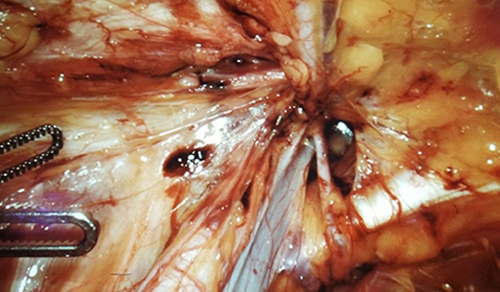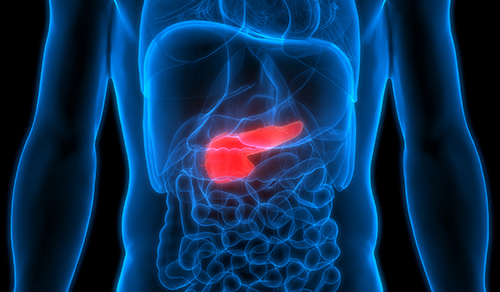A Focus on Fetal and Neonatal Alloimmune Thrombocytopenia
Fetal and neonatal alloimmune thrombocytopenia (FNAIT) is a rare disease that occurs in approximately one in 1,000 births. The platelet equivalent of hemolytic disease of the fetus and neonate (Rh disease), FNAIT carries life-threatening consequences, including fetal and neonatal intracranial hemorrhage. The ongoing challenge remains how to detect the disease before it wreaks havoc on the fetus or newborn by preventing the development of severe fetal thrombocytopenia and secondary intracranial hemorrhage in utero.
Dr. Richard L. Berkowitz, Dr. Emilie M. Vander Haar, and Dr. James B. Bussel
In 1983, James B. Bussel, MD, a pediatric hematologist and expert in low platelet disorders with NewYork-Presbyterian/Weill Cornell Medical Center, and Richard L. Berkowitz, MD, a specialist in fetal diagnosis and therapy at NewYork-Presbyterian/Columbia University Irving Medical Center, formed a longstanding alliance to develop a treatment approach for this devastating condition. Emilie M. Vander Haar, MD, a maternal-fetal medicine specialist at NewYork-Presbyterian/Weill Cornell who trained at Columbia, now partners with them on advancing the understanding and management of FNAIT.
“I had never even heard of alloimmune thrombocytopenia when Jim called me out of the blue in 1983 and told me that it was a fetal platelet disorder caused by the same mechanism as Rh disease,” says Dr. Berkowitz. At that time Dr. Berkowitz was Chair of Obstetrics and Gynecology at Mount Sinai and a recognized authority on the obstetrical management of Rh disease. He now says, “Women at risk of developing FNAIT have a fetus with antigens on its platelets different than the mother’s. The mother makes antibodies to those platelets, which then cross the placenta and destroy the fetal platelets. Unlike Rh disease where the fetus becomes anemic, the fetus with FNAIT becomes thrombocytopenic and has a risk of bleeding into its brain with the potential for dying in utero or developing irreversible brain damage. We were two people working in different institutions in different disciplines who, as a result of that phone call, decided to collaborate in an attempt to find the most effective way to manage FNAIT in utero. We have subsequently been working on that project together for close to 40 years.”
Their enduring collaboration led to the creation in the late 1980s of an algorithm for the management of FNAIT – antenatal administration of intravenous immune globulin (IVIG) and prednisone – which today is considered the standard of care in the United States and around the world. In 2012, they were honored with the King Faisal International Prize for Medicine for their groundbreaking work in the minimally invasive fetal management of that disorder.
“If the treatment algorithms we outlined for fetuses known to be affected are followed, virtually no baby will have an intracranial event and will do fine in the long run,” says Dr. Bussel. “However, some women have difficulties with the side effects of intravenous gamma globulin, including bad headaches and fever and chills. You can prevent or certainly ameliorate these reactions with steroids and antihistamines, but these could also have adverse effects.”
“One of the reasons we focus on this disease is that even though it is rare, it’s the most common cause of intracranial hemorrhage in full-term neonates and also one of the leading causes of severe thrombocytopenia in all neonates,” says Dr. Vander Haar. “You can expect FNAIT to recur in a subsequent pregnancy, which may even be more severe. So, diagnosing this correctly and proceeding with treatment appropriately is very important.”
According to Dr. Vander Haar, the clinical spectrum of FNAIT is broad, ranging from mild to severe thrombocytopenia. “We believe that very severe thrombocytopenia may lead to spontaneous intracranial hemorrhage in utero, which can cause profound disabilities or even demise. An estimated 25 to 50 percent of FNAIT cases occur during the woman’s first pregnancy, almost always without warning. Typically, a well mother will have a normal pregnancy and delivery. Then a ‘well’ full-term baby is noted to have bruises and petechiae and the CBC reveals a very low platelet count.”
It is important to note that the neonatal treatment is somewhat different for babies affected by FNAIT than babies who have thrombocytopenia for other reasons. In most cases of neonatal thrombocytopenia, platelet transfusions would be given. In FNAIT, ideally platelet and IVIG (intravenous gammaglobulin) would both be administered. Fortunately, platelets matched for the offending platelet antigen are infrequently required. “Another reason why this diagnosis is important to be made is there are actually a number of human platelet antigen types requiring an experienced center,” says Dr. Vander Haar. “The most common antibody formed is HPA-1a, which is by far the most common cause – about 80 percent – of FNAIT in the U.S. and Western Europe.”
In a commentary in the August 2021 issue of the American Journal of Obstetrics & Gynecology, Dr. Bussel, Dr. Vander Haar, and Dr. Berkowitz present four advances that could substantially change the current approach to detecting and managing fetal and neonatal alloimmune thrombocytopenia.
Screening
Several large population screening studies for patients with pregnancies at risk for FNAIT have been successfully performed in Europe.
Testing
Cell-free fetal DNA obtained from maternal blood can noninvasively determine the fetal human platelet antigen 1 (HPA-1) genotype. This testing is now routinely attainable in the United States.
Prevention
Studies for testing the efficacy of FNAIT prophylaxis are in the very early stages, but one lot of “NAITgam” has already been made and is being investigated in proof of concept studies. This would create a prophylactic product that would be the platelet equivalent of Rh immune globulin (RhoGAM). Similar to RhoGAM, administration of a hyperimmune gammaglobulin derived from the plasma of women with prior affected FNAIT pregnancies could provide prophylaxis for FNAIT.
Treatment
At least four different forms of neonatal Fc receptor (FcRn) inhibitors are being evaluated in Phase 2 and 3 clinical studies, which have demonstrated efficacy and safety of this treatment in individuals with diseases such as immune thrombocytopenia. This approach, in trial in hemolytic disease of the fetus and newborn (HDFN), could be used to prevent maternal immunoglobulin G antibody from causing FNAIT in a fetus at risk of developing the disorder. An FcRn inhibitor should act similarly to IVIG, as it is believed that IVIG also blocks FcRn.
“One significant benefit to FcRn inhibitor therapy is that it should create more complete FcRn blockade, which in turn would prevent passage of virtually all maternal IgG across the placenta in patients affected with either hemolytic disease of the fetus and newborn or FNAIT,” explains Dr. Vander Haar. “Therefore, the use of these inhibitors could entirely eliminate the need to employ prednisone and IVIG, both of which have risks for substantial adverse maternal side effects.” An additional potential benefit of using FcRn inhibitors is that by substantially reducing the half-life of IgG in the maternal circulation these agents would also significantly reduce the levels of anti-HPA-1a antibodies in the mother’s bloodstream.
Dr. Vander Haar, Dr. Bussel, and Dr. Berkowitz are in the process of initiating a multi-site prospective, natural history study with a focus on U.S. populations to assess the occurrence of HPA-1a alloimmunization in women identified to be at higher risk for FNAIT. This study seeks to determine the frequency of the HPA-1a allele in women of different races and ethnicities. It is intended as a prelude to a larger study of both screening and prophylaxis to see if FNAIT can follow the pathway of Rh disease in being largely prevented.
It is anticipated that 20,000 to 30,000 participants will be screened with the goal of identifying 30 to 50 pregnant women at higher FNAIT risk. Of the women identified at higher FNAIT risk, it is anticipated approximately 10 to 20 may alloimmunize.
Reference Article
Bussel JB, Vander Haar EL, Berkowitz RL New developments in fetal and neonatal alloimmune thrombocytopenia. American Journal of Obstetrics and Gynecology. 2021 Aug;225(2):120-127.










